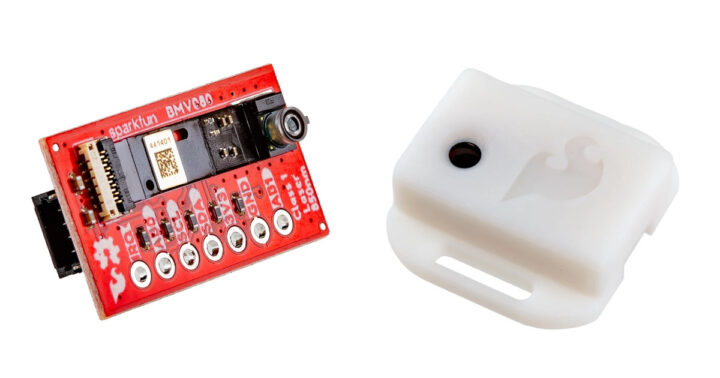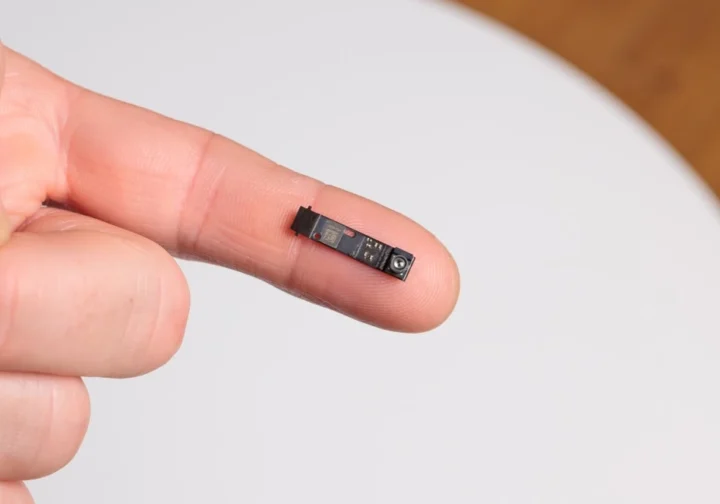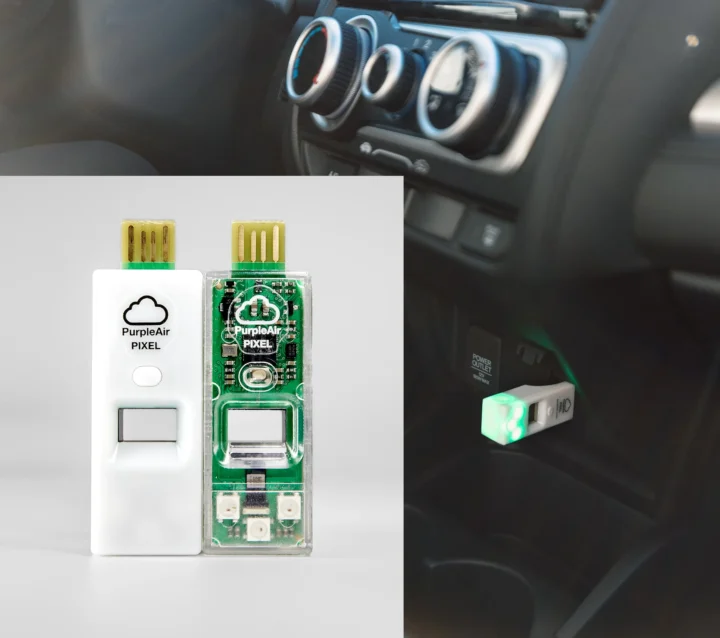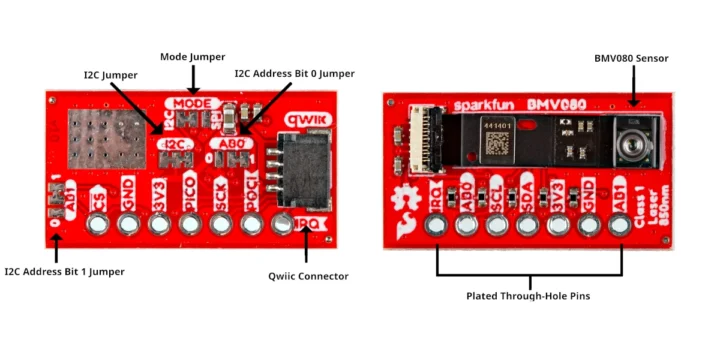SparkFun’s “Air Quality PM1/PM2.5/PM10 Sensor – BMV080 (Qwiic)” is breakout board for the Bosch Sensortec BMV080 particulate matter sensor which the German company claims is the world’s smallest and 450 times smaller in volume than any comparable device on the market.
It’s summer in Thailand right now, and besides scorching temperatures of over 40°C during the day, it’s also smog season with high PM 2.5 values and frequent alerts not to exercise outdoors. We usually get the Air Quality Index (AQI) from apps like IQAir AirVisual, or people can install air quality monitors in fixed locations to get local readings. But the small size (4.4 x 3.0 x 20 mm³) of the Bosch BMV080 can enable PM2.5 monitoring in wearables or other small devices like the PurpleAir PIXEL USB dongle.

SparkFun Air Quality PM1/PM2.5/PM10 Sensor – BMV080 (Qwiic) specifications:
- Sensor – Bosch Sensortec BMV080
- PM Mass Concentration
- Range: 0 to 1000 µg/m3
- Resolution: 1 µg/m3
- Precision
- ± 10µg/m3 @ 0 to 100 µg/m3
- ± 10% of measured value @ 101 to 1000 µg/m3
- Measurement Modes – Continuous or duty cycling
- Maximum Output Data Rate (ODR)
- 0.97 Hz in Continuous Measurement Mode
- Lower ODR Rates configurable in duty cycling measurement mode
- Communication interfaces – I2C (default) or SPI
- Start-up time – 1.2s
- Supply Voltage – 1.2 to 3.3V DC
- Dimensions – 4.2 x 3.1 x 20 mm
- Weight – 0.092 grams
- Laser Class – Class 1, according to IEC 60825-1
- Temperature Range – Operating: -10 to +40°C; storage: -10 to +80°C
- PM Mass Concentration
- 13-pin 0.33mm FPC used to connect the BMV080 sensor
- Expansion
- Vertical Qwiic I2C connector (Set to 0x57 address by default, but configurable between 0x54 to 0x57)
- 7x through holes with I2C, SPI, IRQ, 3.3V and GND
- Voltage Input – 3.3V via Qwiic Connector
- Current Consumption @ 3.3V
- 0.97 Hz ODR (active measurement) – < 68mA
- Sleep current – < 30 µA
- Dimensions – 24.13 x 12.70 mm (Breakout board)

The breakout board is open-source hardware, and Sparkfun provides the PDF schematics, KiCad hardware design files, 3D STEP files for the board and plastic enclosure, and a hookup guide showing how to use the “SparkFun Air Quality PM1/PM2.5/PM10 Sensor – BMV080” with the IoT Redboard – ESP32 development board and the Arduino IDE leveraging the SparkFun BMV080 and Toolkit v1.0.0 libraries.
The video embedded below provides an overview of the BMV080 sensor and breakout board, and a demo with an OLED display showing PM1 and PM2.5 values increasing due to the smoke originating from a soldering iron’s tip.
Sparkfun sells the Air Quality PM1/PM2.5/PM2 sensor – BMV080 for $64.95. As noted in the introduction, another way to experiment the new Bosch sensor is to get a PurpleAir PIXEL USB dongle for $119 that changes its RGB LED color depending on the AQI value. It’s a standalone sensor without network connectivity, but you can still retrieve data through USB and upload it later.


Jean-Luc started CNX Software in 2010 as a part-time endeavor, before quitting his job as a software engineering manager, and starting to write daily news, and reviews full time later in 2011.
Support CNX Software! Donate via cryptocurrencies, become a Patron on Patreon, or purchase goods on Amazon or Aliexpress







It seems promising, but it is quite expensive
It’s BMV080, not BVM080 in the title, btw.
ESPHome support and ESP32 board please? 😉
I have no idea how that compares to other sensors, but Wikipedia tells us that the limits given by the WHO are:
So, a precision of
seems to be a problem, especially for the PM2.5 limit. Unless you are well above the allowed limit, you have no way to know if you are above or under.